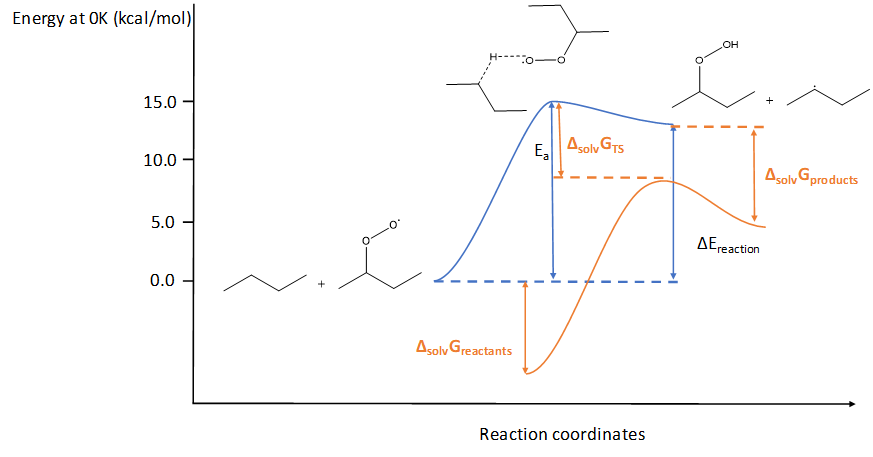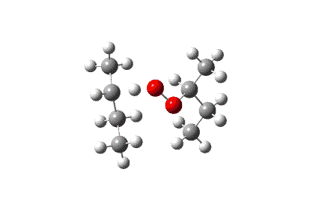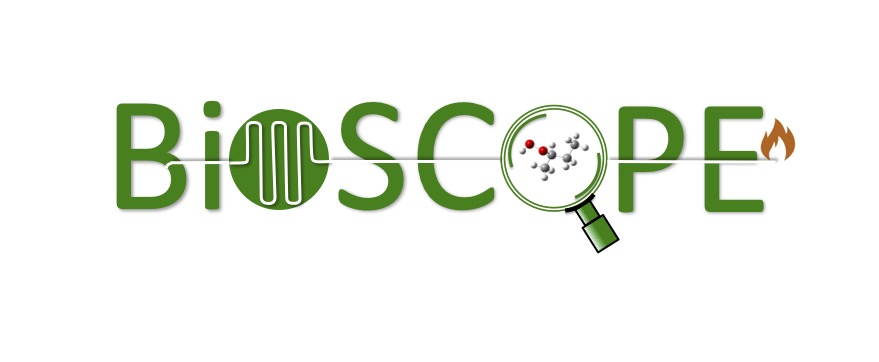The BioSCoPe project aims to understand the synergistic effects of fuel oxidation, the action of antioxidant additives, and their consequences on fuel reactivity and the pollutants emitted during its combustion. The development of coupled experiments for aging and combustion and of models capable of simulating the experimental results will make it possible to formulate innovative biofuels/fuels/antioxidant mixtures, optimized for the first time over their entire chain of use: from storage to combustion.
This project is built on the experience and know-how of our team in the field of chemical combustion kinetics, both in terms of experiments and modeling. The study of combustion chemistry, which is a high temperature oxidation reaction, is carried out in the gas phase. A major challenge of the BioSCOPE project is to imagine and develop experiments and simulations to study the oxidation of (bio)fuels, which is the main cause of their ageing, in the liquid phase.
History
- For more than thirty years, the team of the Radical Kinetics Group of the LRGP in Nancy has been studying oxidation reactions in the gas phase to optimize combustion processes, in terms of efficiency and reduction of pollutants. Experimental studies involve ideal chemical reactors designed to characterize only the rates of chemical reactions: jet-stirred reactors, shock tubes, laminar flame experiments. These experiments, well defined kinetically, can be modeled from detailed kinetic models of combustion. These models contain thousands of reactions and make it possible to simulate macroscopic phenomena (auto-ignition time, fuel conversion, laminar flame speed, pollutants emitted) based on mechanisms described at the molecular level. The generation and manipulation of mechanisms of this size require the use of advanced computational chemistry tools that our team has been developing for decades: EXGAS, THERGAS, KINGAS software.
- From 2016 to 2019, the first theoretical work to adapt the thermochemical data (enthalpies, entropies, heat capacities) of gas phase combustion models to the liquid phase was undertaken in the laboratory as part of the PhD thesis of Édouard Moine, advised by Baptiste Sirjean and Romain Privat (LRGP Thermodynamics and Energy team). This work has made it possible to establish the first almost exhaustive experimental database of solvation free energies in the literature and to propose the calculation of this quantity with a novel approach based on the use of equations of state.
- In 2018, the ANR JCJC BioACE project made it possible to strengthen this research theme on the aging kinetics of (bio)fuels by allowing the development of experiments in PetroOxy and detailed kinetic models of oxidation in the liquid phase of biofuels and conventional fuels surrogates.
The BioSCOPE project

Project organization
Working Package WP1
Design and use of a new micro-channel reactor coupled to a gas-phase combustion reactor
The work planned in WP1 consists in developing a micro-reactor where the oxidation of the liquid biofuel will take place. The reactor will be designed so that it can be modeled as an ideal piston reactor. The evolution of the composition of the oxidized liquid will be monitored in-situ in the micro-reactor by Raman spectroscopy. At the outlet of the reactor, the liquid will be sent to an ideal combustion reactor. The aged liquid can be analyzed by High Performance Liquid Chromatography (HPLC) and Gas Chromatography (GC). Similarly, the pollutants formed at the outlet of the combustion reactor will be analyzed according to the prior aging of the biofuel.
Le Si-glass microreactor will be produced in collaboration with the MIMENTO platform of FEMTO-ST Institute in Besançon
MIMENTO : Microfabrication pour la mécanique, les nanosciences, la thermique et l’optique
Working Package WP2
Liquid-phase thermodynamic data for the automatic generation of kinetic model
In this WP, the method based on quantum chemistry and statistical thermodynamics COSMO (COnductor like Screening MOdel) will be used to generate at high frequency the thermodynamic data of the thousands of species present in the detailed kinetic models of oxidation in the liquid phase. These data will be produced directly from the COSMO method or from State Equations adapted by our team to deal with free radicals.

Working Package WP3
High-throughput calculation of accurate liquid-phase rate constants
In WP3, the automatic calculation of thousands of elementary rate constants, which change value for each new biofuel, will be calculated automatically from free enthalpy of solvation corrections calculated from quantum chemistry and the theoretical COSMO method ( COnductor like Screenong MOdel). The main challenge of this WP consists in dealing with the thousands of transition states through which the reaction takes place.


Working Package WP4
Development of a unified automatic generator of kinetic models
This last WP is dedicated to the redesign of the EXGAS software, the historical generator of combustion mechanisms of our team and to its extension to the liquid phase to describe the oxidation of fuel / biofuel mixtures. The work of WP1, 2 and 3 will make it possible to develop and validate the generator for combustion, aging and their coupling.

